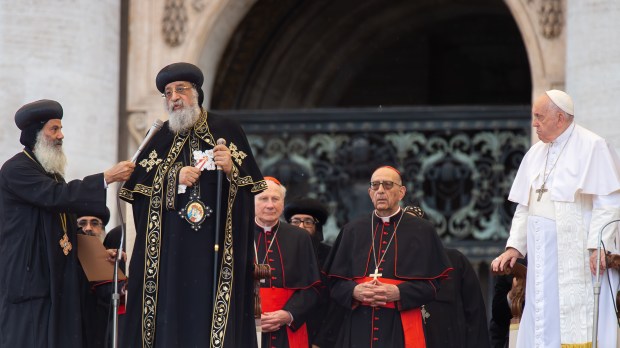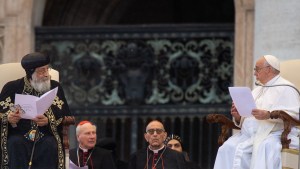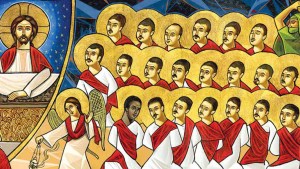Twenty-one Christian martyrs, including 20 Copts killed by Daech in 2015 in Libya, will be included in the Roman martyrology, Pope Francis announced on May 11, 2023, in front of Patriarch Tawadros II, Pope of the Coptic Orthodox Church, who is present in Rome. This is historic: The Catholic Church and the Coptic Church have saints of the first centuries in common, but these will be the first saints recognized by both Churches since the split of the fifth century.
Pope Francis and Tawadros II are celebrating the 50th anniversary of the historic meeting between their predecessors, Pope Paul VI and Patriarch Shenouda III (1973-2023), the first meeting between a Bishop of Rome and a Patriarch of the Coptic Orthodox Church. In this context, the patriarch participated in the general audience of May 10 alongside the Argentine Pontiff in St. Peter’s Square.
Then this May 11, the two men met privately at the Vatican. Thanking the 70-year-old Egyptian patriarch for the “precious gift of a relic of the Coptic martyrs killed in Libya on February 15, 2015,” the Pope made this announcement: “With the agreement of Your Holiness,” he said, “these 21 martyrs will be inscribed in the Roman Martyrology as a sign of the spiritual communion that unites our two Churches.”
The Christian workers, 20 of whom were Coptic Orthodox and one of whom was Ghanaian, were murdered by the Islamic State organization on a beach in Libya on February 15, 2015. Six days later, Patriarch Tawadros II announced the insertion of their names in the “Synaxary” – the Eastern equivalent of the Roman martyrology – on February 15.
These martyrs, Pope Francis assured the audience, “were baptized not only in water and in the Spirit, but also in blood, a blood that is the seed of unity for all followers of Christ.”
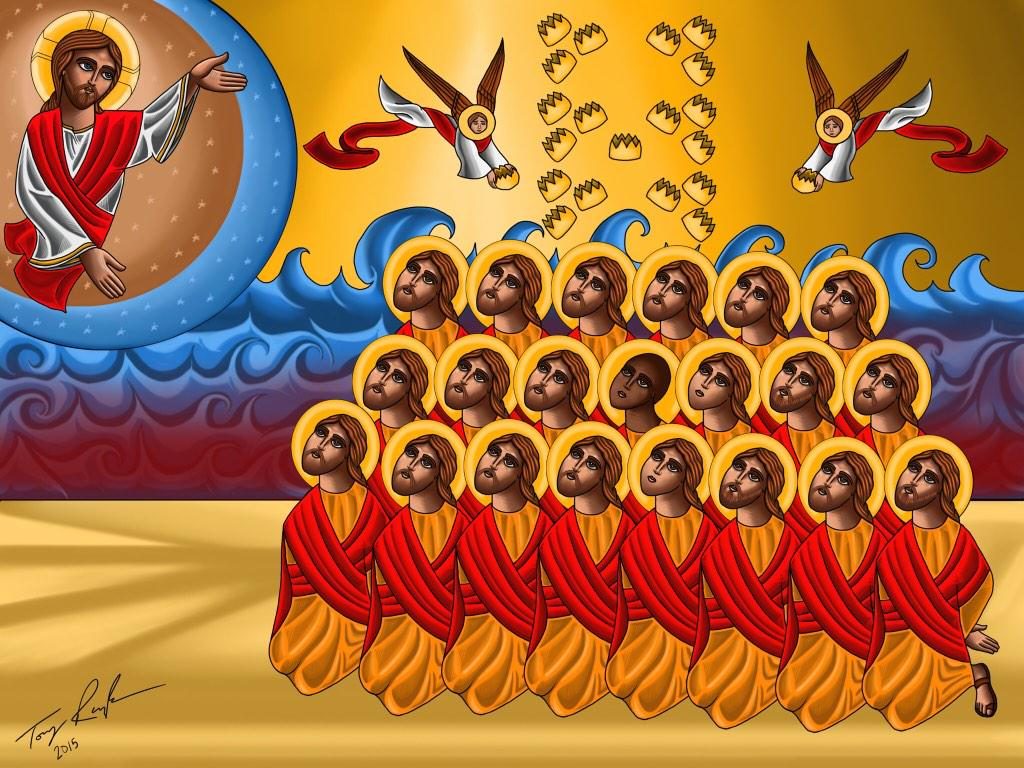
Martyrs’ relics in the Vatican
The relics that the Coptic Pope offered to the Successor of Peter, in a glass and wood box, come from the church dedicated to the 21 martyrs, erected in 2018 in their home village of al-Our.
For nearly three years, Tawadros II explained at a press conference following his meeting with the Pope, “we had no information about their names, nor the region they came from.”
It wasn’t until February 2018 that their remains were found and identified, and then brought to Cairo, where they received a welcoming ceremony at the airport.
This was “very painful for all Egyptians,” he said. “Those who massacred them wanted to have a negative impact on the life and unity of the Egyptian people,” said Tawadros II, referring to the video of the execution, released by Daech, which shocked the world. But, he added, these images were “an even greater testimony to the world. We believe that today [these martyrs] offer us a great blessing.”
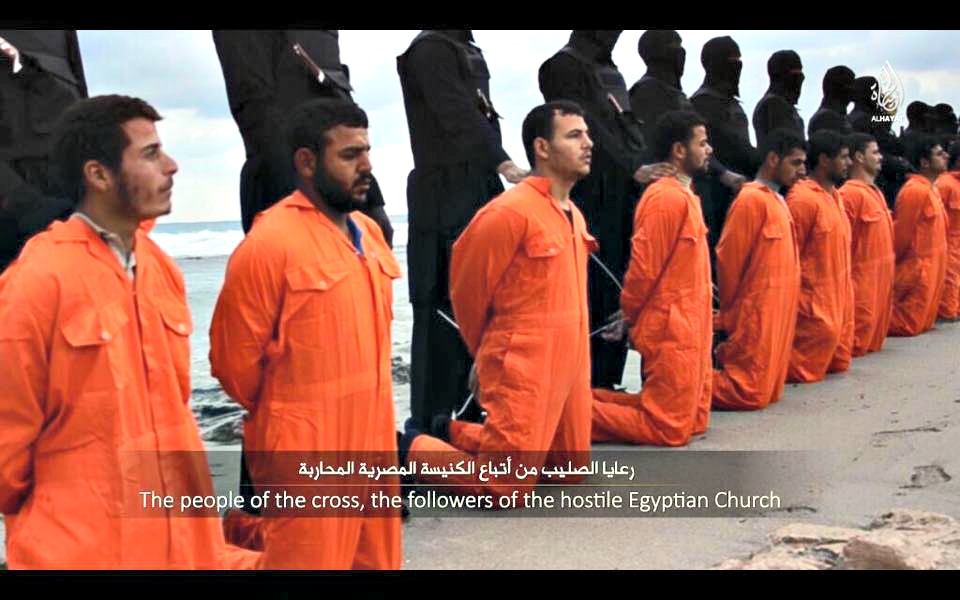
The Coptic Pope welcomed Pope Francis’ announcement of the recognition of their martyrdom by the Catholic Church. It is an “additional” gesture for relations between the two Churches, he said.
A historic gesture
This official recognition by the Catholic Church underlines “the ecumenism of martyrdom,” also known as the “ecumenism of blood,” a Vatican source told I.MEDIA. These 21 men were indeed martyred “because they were Christians” and died “in hatred of the Christian faith,” he added.
“Just as we have saints in common from before the break-up of the Churches, we will now have saints in common from today,” the expert said. And he pointed out the historical significance of this gesture: “They would be the first saints recognized in this way.”
Ecumenism refers to the desire for and work toward the unity of Christians, as Christ desires Ecumenism of blood is a reference to the fact that Christian persecution today involves those of various Churches and denominations, meaning that both Catholics and non-Catholics are giving their lives for their belief in Christ.
The Pope has described it like this:
In various parts of the world, the witness to Christ, even to the shedding of blood, has become a shared experience of Catholics, Orthodox, Anglicans, Protestants, Evangelicals and Pentecostals, which is deeper and stronger than the differences which still separate our Churches and Ecclesial Communities. The communio martyrum is the greatest sign of our journeying together.
Saints
In practice, the Roman Martyrology includes “all those who are the object of public Catholic devotion” and this term commonly covers the saints who are registered in the universal calendar of the Catholic Church, says the same source.
The 21 martyrs will therefore be “saints” for the Catholic Church. This recognition “is only possible because these baptized persons are already recognized as saints by the Coptic Church,” says the specialist. The inscription in the calendar of Catholic saints is therefore “the recognition of a sanctity already recognized by the Copts.”
According to our information, the question of whether it is possible to recognize saints proclaimed as such by other Christian confessions has been debated for some time. But in the case of the Libyan martyrs, the matter is “simpler,” our source assures us, because “no question of theological divergence comes into play.”
Neither absorption nor domination
In his address to Tawadros II, the Pope also recalled “the signing of a memorable Christological declaration” on May 10, 1973, putting an end to the controversy that arose around the Council of Chalcedon of 451, which had led to a rupture between Rome and many Eastern Churches.
That meeting, Francis recalled, led to the creation of the Joint International Commission between the Catholic Church and the Coptic Orthodox Church, which in 1979 adopted the pioneering principles of the search for unity. A unity that cannot be “an absorption of one by the other nor a domination of one over the other,” as John Paul II and Shenouda III declared.
On the ecumenical path, the Pope called us to look “always forward” with “a healthy impatience and a burning desire for unity” despite “moments of discouragement.”
And he thanked Tawadros II for his attention to the Catholic Copts, as well as for the institution of the “Day of Friendship between Copts and Catholics,” celebrated every May 10 since 2013 – the date of Tawadros II’s first visit to the Vatican.
The meeting concluded with a moment of prayer in the Redemptoris Mater Chapel of the Apostolic Palace. On Sunday, the Coptic patriarch will celebrate a Mass in the Pope’s cathedral, the Basilica of St. John Lateran, for the Coptic faithful.
